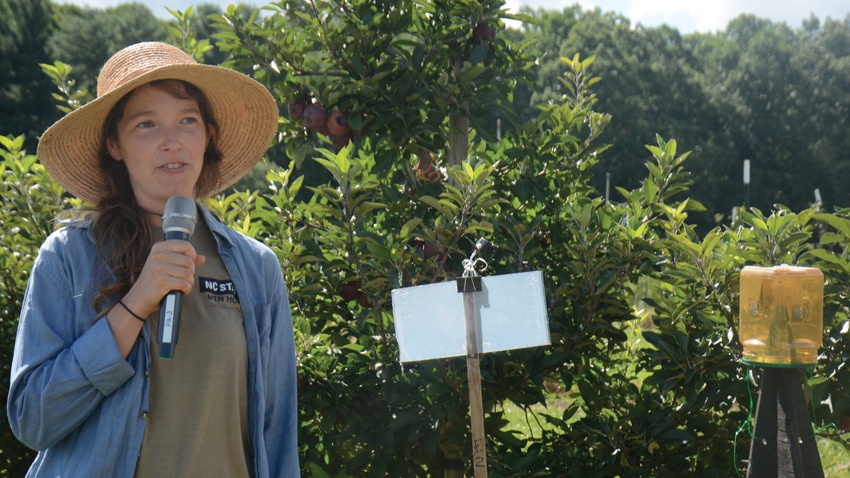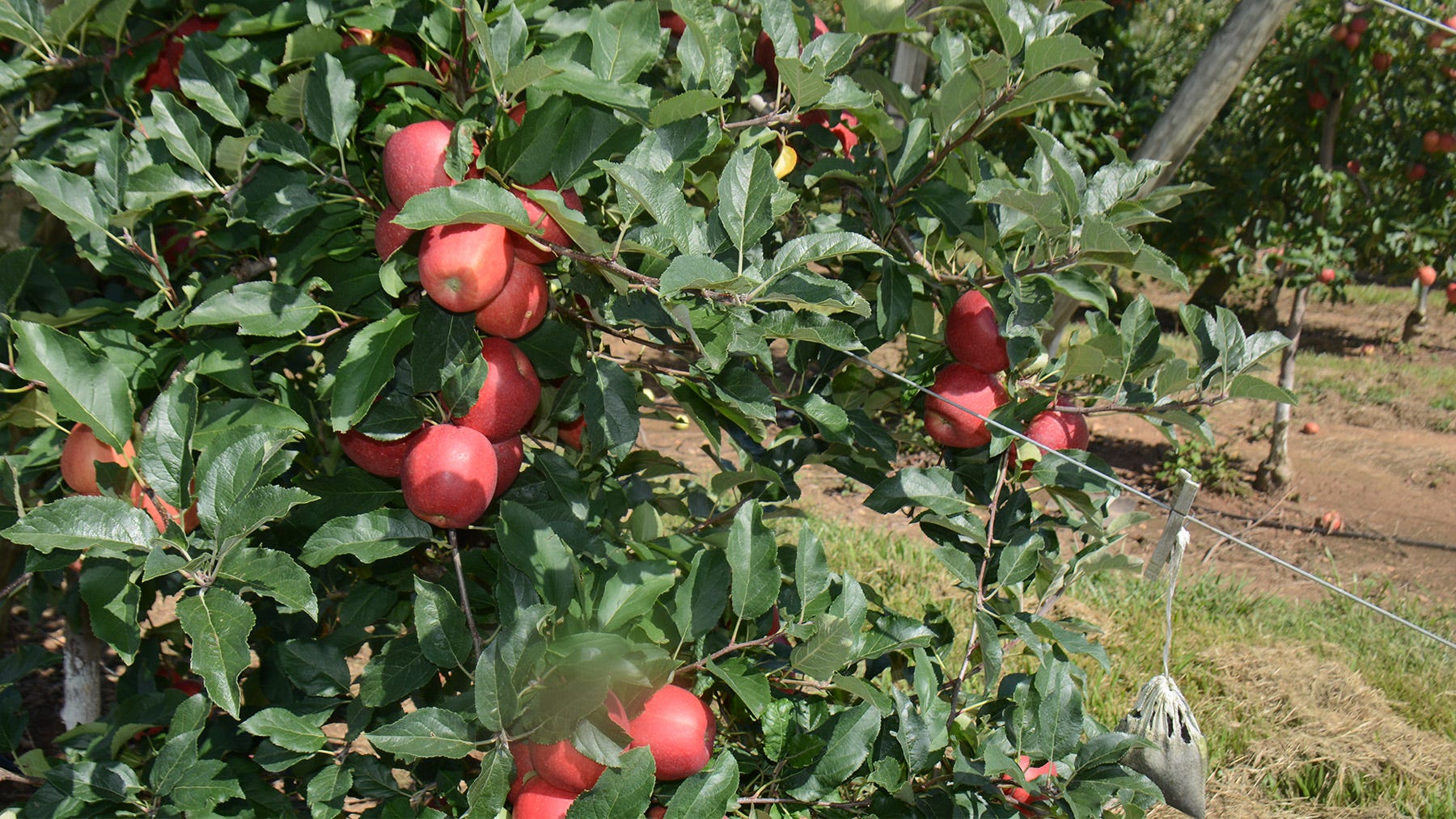
The brown marmorated stink bug continues to be worrisome for North Carolina apple growers, and scientists at North Carolina State University continue seeking solutions to manage this troublesome pest.
Speaking at a field day Aug. 10 at the Mountain Horticultural Crops Research and Extension Center in Mills River, N.C., Emily Ogburn, a research associate in entomology and plant pathology at the station, noted that the arrival of BMSB has necessitated more frequent use of broad-spectrum insecticides compared to the integrated pest management plans apple growers used prior to the arrival of the pest.
Ogburn said N.C. State is researching ways to return to the use of integrated pest management to help apple growers better manage BMSB. She notes that many North Carolina apple growers have not been able to return to IPM strategies yet.
Stink bug arrives in U.S.
In a fact sheet, Jim Walgenbach, NCSU Extension entomologist for fruits and vegetables, explains that the brown marmorated stink bug is an invasive pest native to eastern Asia. It was detected in the United States in Pennsylvania in the late 1990s and has since spread across the nation, increasing to large, damaging numbers throughout the mid-Atlantic region and beyond.
It was first detected in North Carolina in 2009 near Winston-Salem. Initial invasions usually occur in urban or suburban settings, and by 2012, BMSB had become a locally abundant nuisance pest in structures throughout the mountains and Piedmont.
As of April 2023, BMSB was confirmed present in 80 of North Carolina’s 100 counties, according to Walgenbach. For reasons that are not yet entirely clear, BMSB has not become well established in the Coastal Plain, Wagenbach notes.

Gala apples ready for harvest at the Mountain Horticultural Crops Research Center in Mils River, N.C. on Aug. 10. Credit: John Hart
On apples, BMSB damage can appear similar to hail damage and bitter pit spotting. At the field day, Ogburn said NCSU has monitored and used traps to help find control solutions for North Carolina apple growers.
The first trap scientists at the research station used is called a “pyramid trap.” Ogburn explains that the trap uses a dual lure to attract the stinkbugs. The pyramid trap uses an aggregation pheromone to capture the stink bugs.
“After working with the pyramid trap model for several years and having to paw through piles of stewing dead stink bugs in here and count them, we moved on to another model. It’s the same lure setup, but it’s a very sticky card,” Ogburn said.
Integrated pest management
Ogburn explained that NCSU is using an integrated pest management or IPM approach in their research. The use of parasitoids and predators are key to the strategy. A parasitoid is an insect that generally lays its eggs in or on the host and eventually kills the host.
“We mostly work with wasps, but there are also some fly species. For the stink bug, we are looking at these tiny wasps. They are very small, and they don’t sting humans. Their stinger is an ovipositor that they use to lay their eggs in the eggs of stink bugs. They kill the stinkbugs that they lay the eggs in,” she said.
“But our native parasitoids are not very effective at controlling the brown marmorated stink bug populations, so we’ve monitoring them using sticky cards and also sentinel egg masses. We put out a stink bug egg mass and bring it back in to see if it is parasitized and try to ID the parasitoid,” she said.
“But recently an Asian parasitoid, Trissolcus japonicus, has arrived in the United States and just a couple of years ago we found it in North Carolina. We have a colony of Trissolcus japonicus in the lab and we are hoping to get funding to do some more research on that,” she said.
Trissolcus japonicus, or the samurai wasp, is a parasitoid wasp that is a natural enemy of the brown marmorated stink bug.
About the Author(s)
You May Also Like






